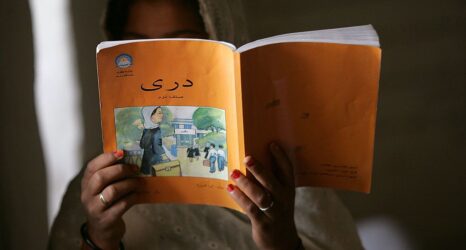The thread of social stigmatizing and racism has long woven through the fabrics of science and medicine. To this day, women experience weight discrimination at significantly higher rates than male peers.

Sarah Baartman, an indigenous South African woman born in 1789, was subjected to profound cruelties, specifically associated with her body size and shape—placed at first in a cage alongside a rhinoceros, and later in circuses and so-called “freak-shows” throughout Europe under the name Hottentot Venus.
Shamefully, it was a physician that held and paraded Baartman in this form of bondage. In 1815, when she was only 26 years old, Baartman died. But her story does not end there: After her early death, Baartman’s body was dissected. Her genitals and brain were “pickled” in formalin and held in jars within a French museum, the Musee de l’Homme. This prurient fascination with and colonization of her body, spanned across centuries.
In 2002, nearly 200 years after her death and five years of negotiations, Baartman’s body was finally repatriated to South Africa.
Was it her race, weight, sex or a combination of each—an intersection—that made a medical and social spectacle of Baartman?
The important intersection of sex, race and weight deserves serious attention and reflection, because vestiges of the past are tethered to the present in new forms of discrimination. As much as social norms have changed, too much shaming associated with sex, race and weight remains.
The implicit and explicit stereotypes associated with “Black women being overweight” include notions that they are “not feminine,” that they are “aggressive” and “promiscuous.” The stereotypes operate to turn into a negative that which is otherwise desired—they have “big butts” and “like to eat fried chicken.”
Serious psychological harms can result from these stereotypes and they can affect every aspect of a woman’s life.
As Dr. Kirsten Davison’s research shows, even for “overweight girls,” they too can “internalize fat stereotypes” and have “low psychosocial well-being.”
According to Dr. Rebecca M. Puhl and her co-authors, “Weight bias has been demonstrated among primary care providers (PCPs), endocrinologists, cardiologists, nurses, dietitians, and medical trainees, including attitudes that patients with obesity are lazy, lack self-control and willpower, personally to blame for their weight, noncompliant with treatment and deserving targets of derogatory humor.”
This bias continues to intersect with race and sex. As Puhl explains, “Weight discrimination is commonly reported by Americans at rates comparable to those of racial discrimination (especially in women).”
Body weight has become a proxy for ‘wellness,’ and the discourse on obesity and health has been chiefly framed around bad personal decisions on food and exercise.
As race and gender norms have emerged politically and through society, they also evolved through science and medicine. Under the guise of protecting communities from obesity, a type of social policing has emerged and is carried out through the medical sphere. On one hand, who would argue against the value and importance of promoting health, wellbeing and safety? Most people want to live meaningful lives where they and their communities can flourish. Yet, on the other hand, in many places around the globe, the message pushed by health authorities is that having a body weight that ranks as “overweight” or “obese” will kill you and is harmful to health. As such, authorities have declared the “war on obesity” and the existence of an epidemic that needs to be addressed by all means.
In this context, it is crucial to examine the ways weight stigma impacts the right to health of people who are considered “fat,” especially considering that the metrics to determined who is or not “fat” has been historically framed around racial and gender biases. According to the Obesity Action Coalition, “research suggests that women, especially those who are middle aged or with lower levels of education, experience weight discrimination at significantly higher rates than male peers.” This type of discrimination is reported to affect wages, and places an “increased risk of job termination.” And, weight-based discrimination is not on the decline, but rather rising.
Consider this, weight discrimination has increased by 66 percent since 1995, and it is widespread among overweight women. Weight discrimination can be devastating, particularly because “for women, weight discrimination has been associated with poorer body image, low self-esteem, depression, anxiety and a range of unhealthy eating behaviors, including binge eating.”
As with Sarah Baartman’s story, colonialism and racism are at the root of modern medical and scientific exploration and exploitation.
Professor Sabrina Strings explains how fatphobia has racist origins, rooted in anti-Blackness. The origins of the Body Mass Index—BMI—were embedded in notions of racial supremacy. In the 19th century, the Belgian statistician, Adolphe Quetelet, developed an index based on racial classifications and stereotypes. Centering white European men, this metric made it possible to separate people into “normal” and “abnormal,” leaving aside the different ethnic characteristics to understand them as harmful. Since then and despite its serious flaws, the BMI has been weaponized as a “referendum” on individual health.
Body weight has become a proxy for “wellness,” and the discourse on obesity and health has been chiefly framed around bad personal decisions on food and exercise. As Deborah Lupton argues, the concepts of “thinness” and “fatness” have been filled with moral meaning, and fatness can be understood as a “moral failure.” This “blame frame” toward fatness is constructed around the concept of personal responsibility that is reinforced by “healthism,” where fat people become a burden on society for their choices and behaviors.
The bottom line is that the classification between healthy and unhealthy regarding weight has a negative influence on marginalized communities of color, including African Americans, indigenous populations and Hispanics. For these communities, body shaming holds them captive to false ideals of a standard “healthy weight,” as judged by a number on a scale and the BMI.
For many reasons, it is time to incorporate a social justice framework into health and wellness. Even if weight stigma permeates all of society, it is especially harmful when perpetuated in health contexts and by health professionals.
At Ms. magazine, our mission is to deliver facts about the feminist movement (and those who stand in its way) and foster informed discussions—not to tell you who to vote for or what to think. We believe in empowering our readers to form their own opinions based on reliable reporting. To continue providing you with independent feminist journalism, we rely on the generous support of our readers. Please consider making a tax-deductible donation today if you value the work we do and want to see it continue. Thank you for supporting women’s voices and rights.





